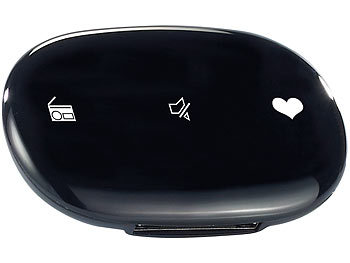Transcoding FLAC To WAV On Server
SlimServer requires set up of an external codec to play Apple Lossless recordsdata on Unix machines. I consider that Live would not actually play any compressed files natively. What it does is converts them to both AIFF or WAV into the undertaking, so in FLAC's case, the file can be an identical to WAV. Convert any ALAC from iTunes to FLAC for any FLAC-supported application and with none high quality loss. Channels: Most audio file codecs don't only permit to retailer a mono or stereo audio stream but also multi-channel audio streams (-> surround).
If you wish to put the recordsdata on an iPod, or just store them in iTunes in a compact form, MP3 can also be a good choice. Nonetheless, there are some stories that when run on battery, latest iPods can struggle or crash when playing MP3s created in functions apart from iTunes. So you could want to export as WAV or AIFF from Audacity and convert the files to MP3 in iTunes as an alternative.
The line does have slight thickness to it where there was originally some form of sign (vs. blank audio at very start and finish), however I do not know if that is something in Amadeus or alac to wav converter with crack what. I tried analyzing that sign and no information are reported. I tried magnigying the sonogram to maximum and http://www.audio-transcoder.com/convert-alac-to-wav nothing reveals up. I additionally took the original mono AIFF and pasted over the inverted unique mono AIFF and it produces the identical barely thick line so I'm not going to fret about it by way of the ALAC being identical to the unique. Simply to check, I additionally used iTunes to re-convert the ALAC back to AIFF and pasted over that sign with the same flat-line result.
First, while Apple did create the ALAC format, it is now open source, so there is not any monopoly. They don't reluctantly" acknowledge the existence of MP3 and MP4; iTunes first launched supporting solely MP3. Then it added AAC, which is MP4, which scads of individuals thought was a proprietary Apple format, and received all crazy about. AAC is superior to MP3, however they obtained accused of the identical thing you wrote here, as a result of not many other apps or units supported it initially. They all do now. Type of like once they launched USB on the primary iMac; now USB is the usual.
It is straightforward sufficient to match. I a lot choose WAV playback however many do not. Your ears will know what is right for you. I personally don't bother transcoding FLAC on the fly. It strikes me as simply introducing extra variables. I convert the whole lot (other than DSD) to WAV and retailer it as such. Storage isn't expensive and WAVs can be tagged simply fantastic. So there are as many decisions as you may consider and there might be one which works finest for you.
If you happen to're an Apple person that organizes your digital music library with iTunes, you most likely already know that the lossless audio format it helps natively is ALAC, WAV, AIFF. You probably have got some lossless music recordsdata that come withape,flac extension, you then must convert them to ALAC (or WAV, AIFF) to maintain the sound quality before you adding them in iTunes library.
Disk space is affordable. I chose WAV. Certain FLAC, ALAC, and WAV must be the identical, but with WAV I haven't got to surprise if I am lacking anything. If you use Windows, you will get a free version of dBpoweramp , which can convert recordsdata, and a paid version, which you should use to rip CDs, edit tags and more. After the conversion is full (which doesn't take too long, unless you are converting loads of large files) you will receive an e-mail together with your file(s) able to download.
Like MP3 before it, FLAC has been embraced by the music trade as a cost-effective solution to distribute CD-or-better-quality music, and it doesn't have the auditory problems of MP3s. FLAC is lossless and more like a ZIP file - it comes out sounding the same when it's unzipped. Previously the only method to get "lossless" information was through the uncompressed CD formats CDA or WAV, but neither is as house-efficient as FLAC.
DRM stands for Digital Rights Management. It's a system that restricts folks from utilizing their music in a variety of methods and is mostly frowned upon by music followers. DRM locks you into a sure hardware model for the life of the music file. By cutting DRM out of the equation, we've enabled HDtracks users to play their recordsdata on any transportable participant system they wish.
Sound Designer Information: Sound Designer I and II (SDII) audio recordsdata are comparable in structure to AIFF files and can contain timestamped region information. Use of Sound Designer format information can make transfers between Logic Professional and older Pro Instruments periods more handy. Could not discover any technical causes not to go with ALAC and it's so a lot simpler to cope with than FLAC files. ALAC it is. Thank you for the affirmation.